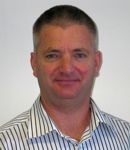Industry Forum
Perspectives on Entrepreneurship in Robotics and Automation
Tuesday, September 16, Crystal Room, 9:00-17:30
Building upon the success of the two previous Industry Forums at ICRA'12 ('Bridging the Gap between Industry, Academia, and End-users') and IROS'13 ('Where does Entrepreneurship Fit in within Industry & Academia?'), this edition of the Industry Forum at IROS'14 will focus on bringing together leading robotics companies and start ups to understand and to formulate an action plan on the topic of entrepreneurship. With several high profile robotics acquisitions in the last few years, such as Google's impressive collection of eight companies and Amazon's $775 million Kiva Systems to name a few, robotics and automation technologies have been thrust into the cross hairs of the tech. community's periscope. Motivated by these considerations, this Forum intends to provide a platform for stakeholders from academia, industry, government, and end-user communities to share their experiences, failures, suggestions, and wishlists at one of the premier robotics conferences in the world.
We envisage speakers from the entire gamut of technological spectrum, from SMEs to established companies to start ups from North America, Europe, Asia and Australia and across different domains, including the venture capitalist community to be part of the discussions at this Forum. It is our intention to capture the discussions and salient points at the Forum and summarize it in the form of a white paper towards encouraging future discussions, efforts, and laying concrete plans in the near future for the benefit of the community. The intended audience of the Forum are graduate students, researchers, roboticists and anyone interested in entrepreneurial topics in robotics and automation. The format of the Forum will consist of 3 keynotes and 12 regular talks, and a panel discussion with participation from all attendees.
Organizers: Raj Madhavan (Vice President, IEEE-RAS Industrial Activities Board and University of Maryland College Park, USA) and Torsten Kroeger (Stanford U and Google, USA)
Agenda
09:00 Welcome and Introduction
09:20 Keynote: Ryan Gariepy, Clearpath Robotics, Canada
09:50 Mark Bishop, Ocular Robotics, Australia
10:10 Lee Redden, Blue River Tech., USA
10:30 Coffee Break
10:50 Brandon Basso, 3D Robotics, USA
11:10 Guy Caverot, BA Systemes, France
11:30 Christopher Parlitz, SCHUNK, Germany
11:50 Shafa Walla, Tarsier Inc., USA
12:10 Aaron Park, ROBOTIS, Korea
12:30 Lunch
13:30 Keynote: Michael Peshkin, Northwestern U, USA
14:00 Ayanna Howard, Georgia Tech. and Zyrobotics, USA
14:20 Erwin Prassler, Hochschule Bonn-Rhein-Sieg & runfun GmbH, Germany
14:40 Keynote: Renaud Champion, Robolution Capital, France
15:10 Shahin Farshchi, Lux Capital, USA
15:30 Coffee Break
15:50 Juha Heikkila, European Commission, Luxembourg
16:10 SK Gupta, University of Maryland College Park, USA
16:30 Summary and overview of panel discussion
16:40 Panel discussion
17:45 End
Commercialization of Intelligent Environmental Survey
Ryan Gariepy, Clearpath Robotics, Canada
Keynote A common item of discussion among roboticists is the nebulous concept of “commercialization”. Namely, how does a robotics company with existing technology use it to realize additional value without compromising their core business? This talk will present how Clearpath took a standard robotics research platform, modified it for environmental survey, validated the market, and successfully spun off a business dedicated to data collection. It will go into detail about how we fit this effort around the rest of our business activities, how we used existing open and closed source technology to speed prototyping, and what the response has been from the market. Most importantly, it will provide information on how Clearpath has effectively deployed this technology as a data services-based model as opposed to remaining in our traditional position as a platform manufacturer.
 Ryan Gariepy focused on the development of intelligent systems from the very beginning of his engineering studies. The explosion of interest in this field in both industry and popular culture has solidified his belief that the ubiquitous presence of autonomous robotics is not far away. He believes that the benefits of robotics should be accessible to anyone, and is personally driving this vision as the CTO of Clearpath Robotics. Gariepy drives the development of Clearpath’s autonomous control software modules while guiding the continued expansion of Clearpath’s research platform lines, environmental surveying technology, and custom industrial automation solutions. He completed both a B.A.Sc. degree in Mechatronics Engineering and a M.A.Sc. degree in Mechanical Engineering at the University of Waterloo. He has presented on multiple occasions at the RoboBusiness Leadership Summit and the Unmanned Systems Canada conference, and in 2013 spoke on behalf of the Canadian High Commission at the Global Intelligent Systems conference in London, England. He is also a co-founder of the Robot Operating System developers' conference and is on the Board of Directors for the Open Source Robotics Foundation.
Ryan Gariepy focused on the development of intelligent systems from the very beginning of his engineering studies. The explosion of interest in this field in both industry and popular culture has solidified his belief that the ubiquitous presence of autonomous robotics is not far away. He believes that the benefits of robotics should be accessible to anyone, and is personally driving this vision as the CTO of Clearpath Robotics. Gariepy drives the development of Clearpath’s autonomous control software modules while guiding the continued expansion of Clearpath’s research platform lines, environmental surveying technology, and custom industrial automation solutions. He completed both a B.A.Sc. degree in Mechatronics Engineering and a M.A.Sc. degree in Mechanical Engineering at the University of Waterloo. He has presented on multiple occasions at the RoboBusiness Leadership Summit and the Unmanned Systems Canada conference, and in 2013 spoke on behalf of the Canadian High Commission at the Global Intelligent Systems conference in London, England. He is also a co-founder of the Robot Operating System developers' conference and is on the Board of Directors for the Open Source Robotics Foundation.
Ocular Robotics: The Commercialization Journey of an Australian Robotics Technology Company
Mark Bishop, Ocular Robotics, Australia
This talk will briefly explain the technology Ocular Robotics was founded on and the drivers for its development. Followed by an overview of where the company is now and the commercialization journey that it has taken to get there, along with the peculiarities, pitfalls and advantages of doing it in an Australian context.
 Mark Bishop received the degrees, B.Sc. in Physics and B.E.(Hons) in Mechatronics both from the University of Sydney, Australia in 1998 and 2000 respectively, after careers in agriculture and aquaculture. From 2000 to 2007 he worked in research at the Australian Centre for Field Robotics (ACFR), University of Sydney developing sensors for projects in mine automation and autonomous vehicles. After founding Ocular Robotics to commercialize the ‘RobotEye’ technology, a technology which delivers fast and precise pointing of optical sensors about two axes, Mark has worked to position the company as a key supplier of unique, high performance sensing technologies to markets including the robotics, automation, defence, security and resources sectors.
Mark Bishop received the degrees, B.Sc. in Physics and B.E.(Hons) in Mechatronics both from the University of Sydney, Australia in 1998 and 2000 respectively, after careers in agriculture and aquaculture. From 2000 to 2007 he worked in research at the Australian Centre for Field Robotics (ACFR), University of Sydney developing sensors for projects in mine automation and autonomous vehicles. After founding Ocular Robotics to commercialize the ‘RobotEye’ technology, a technology which delivers fast and precise pointing of optical sensors about two axes, Mark has worked to position the company as a key supplier of unique, high performance sensing technologies to markets including the robotics, automation, defence, security and resources sectors.
Start-up Customer Development: How Blue River Found Its Initial Market
Lee Redden, Blue River Technology, USA
Blue River Technology is a pioneer in bringing computer vision and machine learning technology to agriculture. This talk will go through the pre-customer, pre-investment, pre-idea phase of the company when it was just classmates in search of an opportunity. The lean start-up methodology will be illustrated with a case study on how information enabled several quick pivots to eliminate bad directions and to reveal a good market opportunity. A slide will cover the current design of robots which can act on over 1 million plants per hour and today account for two percent of U.S. lettuce production.
 Lee Redden is the co-founder and CTO of Blue River Technology, a computer vision and robotics company working in agriculture which builds machines that "Make Every Plant Count". He was named as one of Forbes 30 under 30 in Energy and Industry. He has a bachelor’s degree from the University of Nebraska-Lincoln and a Master's degree from Stanford where he went on a leave-of-absence from the Ph.D. to start Blue River Technology. He has received numerous grants and currently is the P.I. on an NSF SBIR Grant to advance computer vision in robotics. Before Blue River, he worked in robotics labs at Johns Hopkins Applied Physics Lab and NASA Johnson Space Center. His work has been featured in the New York Times, the Economist, NPR, Harvard Business Review and several other popular magazines.
Lee Redden is the co-founder and CTO of Blue River Technology, a computer vision and robotics company working in agriculture which builds machines that "Make Every Plant Count". He was named as one of Forbes 30 under 30 in Energy and Industry. He has a bachelor’s degree from the University of Nebraska-Lincoln and a Master's degree from Stanford where he went on a leave-of-absence from the Ph.D. to start Blue River Technology. He has received numerous grants and currently is the P.I. on an NSF SBIR Grant to advance computer vision in robotics. Before Blue River, he worked in robotics labs at Johns Hopkins Applied Physics Lab and NASA Johnson Space Center. His work has been featured in the New York Times, the Economist, NPR, Harvard Business Review and several other popular magazines.
Building an Open Source Robotics Business
Brandon Basso, 3D Robotics, USA
3D Robotics is the leading open UAV company, and is built on a “give away the bits, sell the atoms” business strategy. Combining a large but otherwise relatively traditional open source software development community (free) with our own hardware factories and retail channels (paid) has allowed 3DR to both raise significant amounts of venture capital and build a 200+ person company. This talk will focus on the unique challenges and opportunities in building profitable hardware businesses around open innovation.
 Brandon Basso is the Head of R&D, 3D Robotics. He got his start in mechanical engineering at Columbia University, and upon graduation took a dream job at Honeybee Robotics. A few months later he was drilling holes on Mars with Spirit and Opportunity. Brandon moved to Berkeley for grad school in 2006, and in 2013 received his Ph.D. in Mechanical Engineering. At Berkeley, he was a member of the Center for Collaborative Control of Unmanned Vehicles under the direction of Karl Hedrick. His research involved controlling teams of small UAVs performing collaborative search and track tasks, which necessitated a year of flying autonomous planes in the California desert. Brandon was also named to the All-American Triathlon team in 2009, and propelled Berkeley to the national title that same year. At 3DR, Brandon develops aerial mapping platforms based on autonomous fixed-wing and multirotor aircraft. These systems are targeted primarily to the agricultural industry for the purpose of increasing farm yield, providing farmers with crisp and accurate aerial imagery for crop analysis and applications in precision agriculture. In addition to precise camera triggering and localization, Brandon is involved in object tracking, fixed-wing aircraft control, and robotic system architecture.
Brandon Basso is the Head of R&D, 3D Robotics. He got his start in mechanical engineering at Columbia University, and upon graduation took a dream job at Honeybee Robotics. A few months later he was drilling holes on Mars with Spirit and Opportunity. Brandon moved to Berkeley for grad school in 2006, and in 2013 received his Ph.D. in Mechanical Engineering. At Berkeley, he was a member of the Center for Collaborative Control of Unmanned Vehicles under the direction of Karl Hedrick. His research involved controlling teams of small UAVs performing collaborative search and track tasks, which necessitated a year of flying autonomous planes in the California desert. Brandon was also named to the All-American Triathlon team in 2009, and propelled Berkeley to the national title that same year. At 3DR, Brandon develops aerial mapping platforms based on autonomous fixed-wing and multirotor aircraft. These systems are targeted primarily to the agricultural industry for the purpose of increasing farm yield, providing farmers with crisp and accurate aerial imagery for crop analysis and applications in precision agriculture. In addition to precise camera triggering and localization, Brandon is involved in object tracking, fixed-wing aircraft control, and robotic system architecture.
Innovation Models Implementation to Develop Mobile Robotic Systems
Guy Caverot, BA Systemes, France
BA Systemes (BAS) is a European leader in mobile robotics. The company designs, manufactures and maintains robotics solutions with AGV for industrial and medical activities. Robotic systems proposed by BAS are composed by mobile robots, supervision and interfaces. These systems are installed in all industries: food, bottling, pharmaceutical, manufacturing... Since 2007, BAS applies theories on innovation management to develop its business diversification. In particular, the company uses the models of dynamic capabilities and open innovation. Thus, the company settled a special organization to boost innovation. Thanks to these methods, BAS can design products always more innovative. The know-how in mechatronics and mobile robotics of the company added to the skills of its academic partners enable to answer new needs of end-users e.g. in construction, surgery and aeronautics.
 Guy Caverot is engineer in robotics and had done a PhD. in strategic management. He has several experiences in robotics, first, within industrial groups, then within SMEs. He is associate member and innovation manager of BA SYSTEMES since 10 years. He had initiated and had lead the diversification process towards medical sector. In addition to his business activities, he teaches robotics and innovation management in engineering and business schools.
Guy Caverot is engineer in robotics and had done a PhD. in strategic management. He has several experiences in robotics, first, within industrial groups, then within SMEs. He is associate member and innovation manager of BA SYSTEMES since 10 years. He had initiated and had lead the diversification process towards medical sector. In addition to his business activities, he teaches robotics and innovation management in engineering and business schools.
Components for Mobile Manipulators in the Service Robot Industry
Christopher Parlitz, SCHUNK, Germany
This talk will give an overview on challenges and solutions manufacturers are faced when offering components for the service robot industry today. The focus will be on manipulation hardware but constraints for other components are similar. Experiences when integrating different software and controls will be shared. Finally, example applications solving some challenges will be shown and a summary given.
 Christopher Parlitz (MSc. Dipl.-Math) is Manager for Service Robotics at SCHUNK and has been active in the area of service robotics since 2002. Originally developing safety concepts for industrial robot applications he moved to service robots in 2006. Until 2009 he was project manager for service robotics at Fraunhofer IPA, leading the development of personal service robots, like Care-O-bot 3. He then joined SCHUNK focusing on components for mobile manipulation. These cover particularly light-weight manipulators and robot hands. He is active in international standardization projects for service robot safety (ISO TC 184 / SC2) and also Member of the Board in the EuRobotics aisbl.
Christopher Parlitz (MSc. Dipl.-Math) is Manager for Service Robotics at SCHUNK and has been active in the area of service robotics since 2002. Originally developing safety concepts for industrial robot applications he moved to service robots in 2006. Until 2009 he was project manager for service robotics at Fraunhofer IPA, leading the development of personal service robots, like Care-O-bot 3. He then joined SCHUNK focusing on components for mobile manipulation. These cover particularly light-weight manipulators and robot hands. He is active in international standardization projects for service robot safety (ISO TC 184 / SC2) and also Member of the Board in the EuRobotics aisbl.
Idea to Exit: How to Take a Good Idea, Build a Startup, and Navigate Your Startup Towards Success without Derailing Your Career and Life
Shafa Walla, Tarsier Inc., USA
Building a startup isn't for everyone. It takes a lot of dedication, effort, and willpower to get through the inevitable highs and lows. In this talk, Shafa Wala, cofounder and CEO of Tarsier, Inc., a company focusing on hand gesture recognition and spatial interfaces, talks about venturing into the startup world, how to take an idea and build it into a business, and what to focus on at each stage in the process. Through his experience, he has distilled down successful ways to vet your idea, build a team, raise money, and protect yourself and your ideas throughout the process.
 Shafa Walla is CEO and cofounder of Tarsier, Inc., developer of MoveEye, an eyewear based hand gesture and spatial interfacing company recognized by BBC News, USA Today, Discovery Channel, and CNET for its spatial interaction technology that ushered in a new paradigm of human-computer interaction. Shafa has given talks on approaches to securing IP for innovative technologies, was selected as lead presenter at DEMO 2012 in San Francisco, and lead technology exhibitions at CES 2014, Chicago's Techweek, and Minneapolis’s Minnidemo. He has appeared on popular TV, web, and radio shows such as Into Tomorrow with Dave Graveline, SourceFed with Trisha Hershberger, CNET News with Sumi Das, and Twin Cities ABC Nightly News in a feature about Minnesota startups. Shafa focuses his time at Tarsier leading R&D efforts, fundraising, and IP.
Shafa Walla is CEO and cofounder of Tarsier, Inc., developer of MoveEye, an eyewear based hand gesture and spatial interfacing company recognized by BBC News, USA Today, Discovery Channel, and CNET for its spatial interaction technology that ushered in a new paradigm of human-computer interaction. Shafa has given talks on approaches to securing IP for innovative technologies, was selected as lead presenter at DEMO 2012 in San Francisco, and lead technology exhibitions at CES 2014, Chicago's Techweek, and Minneapolis’s Minnidemo. He has appeared on popular TV, web, and radio shows such as Into Tomorrow with Dave Graveline, SourceFed with Trisha Hershberger, CNET News with Sumi Das, and Twin Cities ABC Nightly News in a feature about Minnesota startups. Shafa focuses his time at Tarsier leading R&D efforts, fundraising, and IP.
Academia-Industry Collaboration Success Based on the Open Source Platform-Creating the Virtuous Circle
Aaron Park, ROBOTIS, Korea
The impact of the collaboration between Academia and Industry with regards to open-source platforms has been hugely successful. Software like Linux is a good example of the open-source software that is widely used. Linux and most other open-source software can be downloaded for free from the Internet, where it is maintained and expanded by a community of developers who donate their patches and modifications. Such software is popular, so why not apply the open-source approach to robotics platforms so that any user can easily modify, expand, or distribute their applications? Many institutions are already integrating the open-source approach with their platforms. When developers write patches, modifications, or new implementations of open-source platform for R&D, these institutions are releasing and sharing their platform to the open-source community, thereby assisting in the development of robotics applications. In this talk, we will share our stories on how the collaboration of Academia and Industry in the open-source approach to robotics has helped create a virtuous circle.
 Aaron Park is the Director of ROBOTIS, INC. and Founder of Robot Edutainment. Aaron has been actively working to develop the next generation of robotics and automation in the US. His goal is to encourage and advance the applicability and usability of innovative application through the infusion of robotics in STEM educational curricula and research. Thus, he has been actively working with various US research institutions, industry, and Maker Faire community to foster academia-industry collaborations and professional development. His interest is to educate, equip, and provide others with essential skills in robotics to become successful future inventors and innovators.
Aaron Park is the Director of ROBOTIS, INC. and Founder of Robot Edutainment. Aaron has been actively working to develop the next generation of robotics and automation in the US. His goal is to encourage and advance the applicability and usability of innovative application through the infusion of robotics in STEM educational curricula and research. Thus, he has been actively working with various US research institutions, industry, and Maker Faire community to foster academia-industry collaborations and professional development. His interest is to educate, equip, and provide others with essential skills in robotics to become successful future inventors and innovators.
Faculty Spinoffs
Michael Peshkin, Northwestern University, USA
Keynote Launching spinoff companies while holding onto one's university day-job, presents both challenges and opportunities. Topics include the intellectual property and equity relationship with a university, involving students or ex-students, sharing of effort between jobs, and of course stories from several startups.
 Michael Peshkin has co-founded four spinoffs to commercialized developments from his research lab at Northwestern University. These were Mako Surgical (acquired by Stryker), Cobotics (acquired by Stanleyworks), Kinea Design (acquired by HDT Robotics), and Tangible Haptics (current). His research is in the area of physical human-robot interaction. He has a 1988 doctorate in physics from Carnegie Mellon and has been at Northwestern since then. In 2012 he was named Charles Deering McCormick Professor of Teaching Excellence.
Michael Peshkin has co-founded four spinoffs to commercialized developments from his research lab at Northwestern University. These were Mako Surgical (acquired by Stryker), Cobotics (acquired by Stanleyworks), Kinea Design (acquired by HDT Robotics), and Tangible Haptics (current). His research is in the area of physical human-robot interaction. He has a 1988 doctorate in physics from Carnegie Mellon and has been at Northwestern since then. In 2012 he was named Charles Deering McCormick Professor of Teaching Excellence.
Research from the Academic Lab to Startup: The Growth Pains of Tech Transfer
Ayanna Howard, Georgia Tech. and Zyrobotics, USA
Have you ever wondered how companies derived from University IP actually survive? Have you heard horror stories about conflict-of-interest, rights of ownership, and licensing agreements? Has it made you back-away from ever wanting to involve yourself in the process? Research products derived in the lab are just that, research. A research product is typically not a commercial product that can directly be sold to the consumer. Technology transfer, the process of translating research discoveries into commercially-realizable products, takes hard-work, thinking outside the box, and a different set of skills – skills that are traditionally not taught in the academic environment. But, it’s worth it!! In this talk, I’ll give an overview of the typical process, discuss some programs that can help with technology transfer, and present some strategies for dealing with University licensing offices.
 Ayanna Howard is the Motorola Foundation Professor in the School of Electrical and Computer Engineering and the Associate Director of Research for the Institute for Robotics and Intelligent Machines at the Georgia Institute of Technology. Her area of research is centered around robotics and assistive technologies, with a focus on technologies that impact children with disabilities. In 2013, she founded Zyrobotics (https://www.zyrobotics.com), which is currently licensing technology derived from her research lab and has released their first assistive technology product, TabAccess, and two special needs Apps. To date, her research has been highlighted through a number of awards and articles, including highlights in USA Today, Upscale, TechCrunch, and TIME Magazine. From 1993-2005, Dr. Howard was at NASA's Jet Propulsion Laboratory, California Institute of Technology. Following this, she joined Georgia Tech in July 2005 and founded the Human-Automation Systems Lab. She also served as Chair of the multidisciplinary Robotics Ph.D. program at Georgia Tech for three years from 2010-2013.
Ayanna Howard is the Motorola Foundation Professor in the School of Electrical and Computer Engineering and the Associate Director of Research for the Institute for Robotics and Intelligent Machines at the Georgia Institute of Technology. Her area of research is centered around robotics and assistive technologies, with a focus on technologies that impact children with disabilities. In 2013, she founded Zyrobotics (https://www.zyrobotics.com), which is currently licensing technology derived from her research lab and has released their first assistive technology product, TabAccess, and two special needs Apps. To date, her research has been highlighted through a number of awards and articles, including highlights in USA Today, Upscale, TechCrunch, and TIME Magazine. From 1993-2005, Dr. Howard was at NASA's Jet Propulsion Laboratory, California Institute of Technology. Following this, she joined Georgia Tech in July 2005 and founded the Human-Automation Systems Lab. She also served as Chair of the multidisciplinary Robotics Ph.D. program at Georgia Tech for three years from 2010-2013.
It's a Long Way to Tipperary
Erwin Prassler, Hochschule Bonn-Rhein-Sieg and runfun GmbH, Germany
...and it is even a longer way to the successful launch of a new consumer robot if you have nothing but a crazy idea and a few bucks on your savings account. In my presentation I will talk a little bit about the bumpy life of an entrepreneur who has gotten in his head to create a new kind of consumer robot. I will talk about how it feels when the consumers' first response see-saws between "Jesus! What a bull****!" and "Wow! What a cool idea!" I will share the experience of what it is like if you talk to investors about then next big thing and they tell you "But it is neither an exoskeleton, nor a drone, nor a telepresence robot! How can it be the next big thing?!" I will speak about endless nights and weekends spent on Alibaba to find cost-effective and reliable suppliers and the big surprise when the first batch of motors arrives. I will talk about numerous sleepless nights that I spend thinking about how to pay people's next salary. I will report about our experience in getting a product certified, if it does not fit into an existing product category. And last but not least I will talk about a really cool new consumer robot.
 Erwin Prassler received a master's degree in Computer Science from the Technical University of Munich in 1985 and a Ph.D. in Computer Science from the University of Ulm in March 1996. Between 1986 and 1989, he held positions as a member of the scientific staff at the Technical University of Munich and as a guest researcher in the Computer Science Department at the University of Toronto. In fall 1989, he joined the Research Institute for Applied Knowledge Processing (FAW) in Ulm, where he headed a research group working in the field of mobile robots and service robotics between 1994 and 2003. In 2004, Dr. Prassler accepted a position as Associate Professor at B-IT Bonn-Aachen Int. Center for Information Technology.
Erwin Prassler received a master's degree in Computer Science from the Technical University of Munich in 1985 and a Ph.D. in Computer Science from the University of Ulm in March 1996. Between 1986 and 1989, he held positions as a member of the scientific staff at the Technical University of Munich and as a guest researcher in the Computer Science Department at the University of Toronto. In fall 1989, he joined the Research Institute for Applied Knowledge Processing (FAW) in Ulm, where he headed a research group working in the field of mobile robots and service robotics between 1994 and 2003. In 2004, Dr. Prassler accepted a position as Associate Professor at B-IT Bonn-Aachen Int. Center for Information Technology.
Daddy, when I’ll get older I want to be Superman
Renaud Champion, Robolution Capital, France
Keynote The past few months have been very active for all the players of the Robotics ecosystem: the European Commission will invest 700 million euros in Robotics research for the next 7 years through the SPARC program, Google has bought 8 Robotics companies driving the interest of all investors to the sector, Service Robotics’ companies have been experiencing strong growth for several years. In this booming context, the need for entrepreneurship is the key to success. But how can we, as stakeholders of the Robotics sector, help improve the entrepreneurial backbone of our industry? Based on his own experience, the speaker will give some personal insights on this question and testify on what it takes to invest in Robotics.
 Renaud Champion is Co-founder and Partner of Robolution Capital. After initial experience in capital markets at BNP Paribas, Renaud has then focused his research on valuing technologies and sourcing companies operating in Robotics, Artificial Intelligence and Cognitive Systems. He then joined the VC firm Orkos Capital as a Partner and launched the fund Robolution Capital (see below). He is also Director of euRobotics aisbl, the European Association of Robotics acting as the private side of the program SPARC, the Robotics Public-Private Partnership with the European Commission. Renaud holds an Engineering Degree in electrical engineering with emphasis on mathematics and signal processing (SUPELEC and University of Michigan). Robolution Capital is the first private equity fund dedicated to service robotics in the world. Robolution Capital's mission is to invest in innovative companies of the fast growing service robotics market, mainly within Europe. Robolution Capital is managed by Orkos Capital SAS, an experienced private equity management company operating in new technologies for more than 20 years. Robolution Capital aims to invest in professional and personal service robotics companies (including integrated products, hardware, software, components, services, smart products…) from seed to expansion capital run by outstanding entrepreneurs.
Renaud Champion is Co-founder and Partner of Robolution Capital. After initial experience in capital markets at BNP Paribas, Renaud has then focused his research on valuing technologies and sourcing companies operating in Robotics, Artificial Intelligence and Cognitive Systems. He then joined the VC firm Orkos Capital as a Partner and launched the fund Robolution Capital (see below). He is also Director of euRobotics aisbl, the European Association of Robotics acting as the private side of the program SPARC, the Robotics Public-Private Partnership with the European Commission. Renaud holds an Engineering Degree in electrical engineering with emphasis on mathematics and signal processing (SUPELEC and University of Michigan). Robolution Capital is the first private equity fund dedicated to service robotics in the world. Robolution Capital's mission is to invest in innovative companies of the fast growing service robotics market, mainly within Europe. Robolution Capital is managed by Orkos Capital SAS, an experienced private equity management company operating in new technologies for more than 20 years. Robolution Capital aims to invest in professional and personal service robotics companies (including integrated products, hardware, software, components, services, smart products…) from seed to expansion capital run by outstanding entrepreneurs.
The Last-mile Challenge in Robotics
Shahin Farshchi, Lux Capital, USA
AI and robotic manipulation have made tremendous advances in the past decade. What parallels can we draw from the early pioneers of the assembly line, to modern industrial automation companies, as it relates to commercializing radical new robotic innovations? What should entrepreneurs expect, and be mindful of, as they are applying their scarce towards bringing their inventions to market?
 Shahin Farshchi is a Partner at Lux Capital, based in Palo Alto, focusing on technology startups. He joined Lux in 2006 after working as a software developer, automotive engineer, circuit designer, entrepreneur, and researcher on wireless brain-computer interfaces. He sourced Lux's investments in Silicon Clocks (NASDAQ:SLAB), SiBeam (NASDAQ:SIMG), Planet Labs, and Flex Logix. When he is not being inspired by great entrepreneurs, Shahin enjoys swimming, jogging, and weight lifting.
Shahin Farshchi is a Partner at Lux Capital, based in Palo Alto, focusing on technology startups. He joined Lux in 2006 after working as a software developer, automotive engineer, circuit designer, entrepreneur, and researcher on wireless brain-computer interfaces. He sourced Lux's investments in Silicon Clocks (NASDAQ:SLAB), SiBeam (NASDAQ:SIMG), Planet Labs, and Flex Logix. When he is not being inspired by great entrepreneurs, Shahin enjoys swimming, jogging, and weight lifting.
EU Research and Innovation Programme: Opportunities for Industry and Entrepreneurship
Juha Heikkila, European Commission, Luxembourg
This talk will present some experiences learned through FP7, the previous European Union Framework Programme for Research and Technological Development (2007-2013), and new opportunities for industry and entrepreneurship in Horizon 2020, the new Framework Programme for Research and Innovation. The focus will be in particular on actions to foster industry-academia collaboration, technology transfer and exploitation of innovations as well as entrepreneurship and funding for SMEs.
 Juha Heikkila joined the European Commission in 1998, and currently works in its Directorate-General for Communications Networks, Content and Technology. For more than nine years, Dr. Heikkila has been working in the unit now called Robotics, first as a Project Officer, since 2008 as the Deputy Head of Unit, and since May 2014 as the Head of Unit. The unit has been funding a multidisciplinary research programme on Cognitive Systems and Robotics for about 10 years, focusing on smarter and more flexible robots and artificial systems. In recent years, in the seventh EU Framework Programme for Research and Technological Development (2007-2013), the annual budget was around €80 million per year. At the beginning of the new seven-year funding programme, Horizon 2020, the unit set up a Public-Private Partnership in Robotics, which brings together all the key stakeholders and invests about €700 million in roadmap-based research and innovation in robotics over a seven-year period. Previously, he was involved in computational and corpus linguistic research at the University of Helsinki, and completed a PhD in Linguistics at the University of Cambridge.
Juha Heikkila joined the European Commission in 1998, and currently works in its Directorate-General for Communications Networks, Content and Technology. For more than nine years, Dr. Heikkila has been working in the unit now called Robotics, first as a Project Officer, since 2008 as the Deputy Head of Unit, and since May 2014 as the Head of Unit. The unit has been funding a multidisciplinary research programme on Cognitive Systems and Robotics for about 10 years, focusing on smarter and more flexible robots and artificial systems. In recent years, in the seventh EU Framework Programme for Research and Technological Development (2007-2013), the annual budget was around €80 million per year. At the beginning of the new seven-year funding programme, Horizon 2020, the unit set up a Public-Private Partnership in Robotics, which brings together all the key stakeholders and invests about €700 million in roadmap-based research and innovation in robotics over a seven-year period. Previously, he was involved in computational and corpus linguistic research at the University of Helsinki, and completed a PhD in Linguistics at the University of Cambridge.
NSF Programs for Supporting Technology Commercialization
SK Gupta, University of Maryland College Park, USA
This presentation will give an overview of NSF programs for supporting Technology Commercialization. Featured programs will include I-Corps, SBIR, and STTR. Other programs that are designed to facilitate industry university collaborations such as GOALI and I/UCRC will also be described.
 Satyandra K. Gupta is a Professor in the Department of Mechanical Engineering and the Institute for Systems Research at the University of Maryland, College Park. He is the director of the Maryland Robotics Center. Prior to joining the University of Maryland, he was a Research Scientist in the Robotics Institute at Carnegie Mellon University. He served as a program director for the National Robotics Initiative at the National Science Foundation from September 2012 to September 2014. Dr. Gupta's interest is broadly in the area of automation. He is specifically interested in automation problems arising in Engineering Design, Manufacturing, and Robotics. He is a fellow of the American Society of Mechanical Engineers (ASME). He has served as an Associate Editor for IEEE Transactions on Automation Science and Engineering, ASME Journal of Computing and Information Science in Engineering, ASME Journal of Mechanism and Robotics, and SME Journal of Manufacturing Processes. Dr. Gupta has received several honors and awards for his research contributions. Representative examples include: a Young Investigator Award from the Office of Naval Research in 2000, a Robert W. Galvin Outstanding Young Manufacturing Engineer Award from the Society of Manufacturing Engineers in 2001, a CAREER Award from the National Science Foundation in 2001, a Presidential Early Career Award for Scientists and Engineers (PECASE) in 2001, Invention of the Year Award in Physical Science category at the University of Maryland in 2007, Kos Ishii-Toshiba Award from ASME Design for Manufacturing and the Life Cycle Committee in 2011, and Excellence in Research Award from ASME Computers and Information in Engineering Division in 2013. He has also received six best paper awards at conferences and 2012 Most Cited Paper Award from Computer Aided Design Journal.
Satyandra K. Gupta is a Professor in the Department of Mechanical Engineering and the Institute for Systems Research at the University of Maryland, College Park. He is the director of the Maryland Robotics Center. Prior to joining the University of Maryland, he was a Research Scientist in the Robotics Institute at Carnegie Mellon University. He served as a program director for the National Robotics Initiative at the National Science Foundation from September 2012 to September 2014. Dr. Gupta's interest is broadly in the area of automation. He is specifically interested in automation problems arising in Engineering Design, Manufacturing, and Robotics. He is a fellow of the American Society of Mechanical Engineers (ASME). He has served as an Associate Editor for IEEE Transactions on Automation Science and Engineering, ASME Journal of Computing and Information Science in Engineering, ASME Journal of Mechanism and Robotics, and SME Journal of Manufacturing Processes. Dr. Gupta has received several honors and awards for his research contributions. Representative examples include: a Young Investigator Award from the Office of Naval Research in 2000, a Robert W. Galvin Outstanding Young Manufacturing Engineer Award from the Society of Manufacturing Engineers in 2001, a CAREER Award from the National Science Foundation in 2001, a Presidential Early Career Award for Scientists and Engineers (PECASE) in 2001, Invention of the Year Award in Physical Science category at the University of Maryland in 2007, Kos Ishii-Toshiba Award from ASME Design for Manufacturing and the Life Cycle Committee in 2011, and Excellence in Research Award from ASME Computers and Information in Engineering Division in 2013. He has also received six best paper awards at conferences and 2012 Most Cited Paper Award from Computer Aided Design Journal.
Copyright © IROS 2014. All Rights Reserved.






















